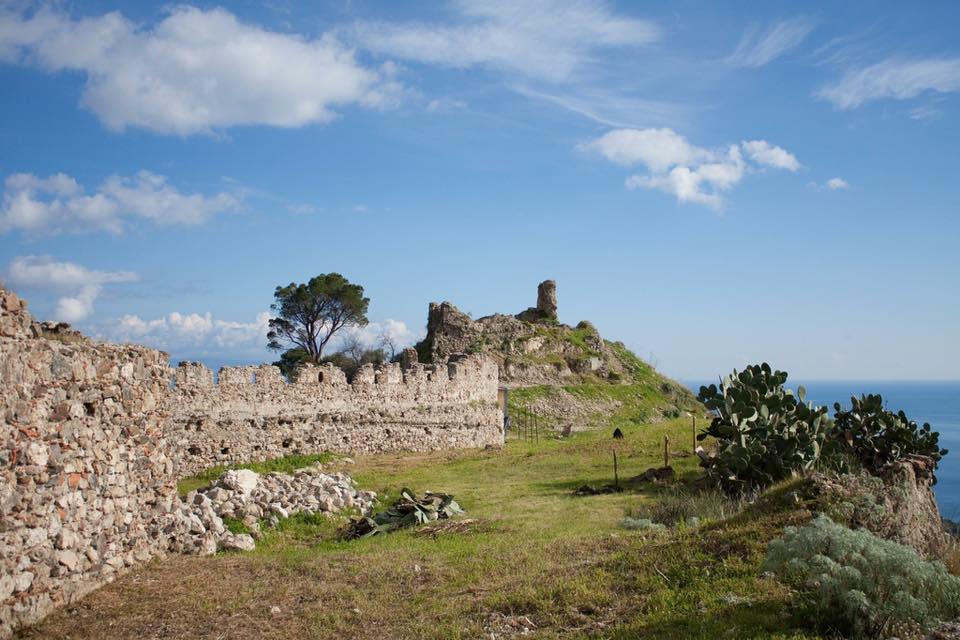
Castello Pentefur di Savoca
Il Castello di Savoca sorge sulla sommità del più esteso di una serie di cocuzzoli sui quali si dipana il tessuto urbano del borgo medioevale.
L'impianto planimetrico è formato da una cinta muraria di perimetro irregolare ed un mastio di perimetro quadrangolare, all’interno di esso si possono distinguere le tracce di alcuni ambienti e una piccola porzione della pavimentazione, venuti alla luce attraverso una serie di vecchi saggi archeologici.Le parti murarie che rimangono si estendono lungo un ciglio che delimita in sommità la vetta dell'erto colle su cui si trova quanto rimane del castello.
Le mura, sufficientemente leggibili per buona parte del tracciato, presentano diversi varchi di finestre e brandelli di merlatura. Nella parte più elevata del pianoro, si distinguono i resti di quello che potrebbe essere il mastio del castello. La muratura della cinta più esterna è costituita da pietrame informe, rincocciato con elementi fittili di recupero legato con abbondante malta di calce.
Andato in rovina alla fine del ‘700 ed oggi rimangono tratti della cinta muraria.
(English)
Pentefur Castle of Savoca
The Castle of Savoca stands on the top of the largest of a series of peaks on which the urban fabric of the medieval village unfolds.
The planimetric system is formed by a wall with an irregular perimeter and a keep with a quadrangular perimeter, inside it you can distinguish the traces of some rooms and a small portion of the flooring, which came to light through a series of old archaeological essays . The remaining wall parts extend along an edge that delimits the summit of the steep hill on which the remains of the castle are located.
The walls, sufficiently legible for a good part of the route, have several windows and shreds of battlements. In the highest part of the plateau, the remains of what could be the castle keep stand out. The masonry of the outermost enclosure is made up of shapeless stones, recessed with clay elements of recovery bound with abundant lime mortar.
It went into ruins at the end of the 1700s and today there are sections of the walls.